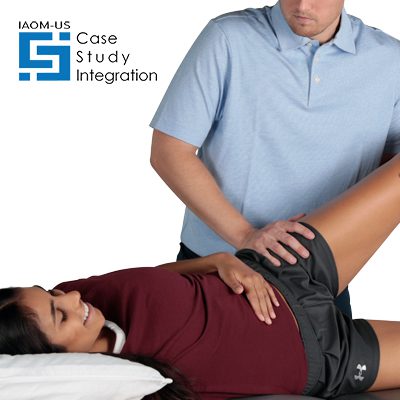Case Study Integration (CSI): Hip – Hamstring Syndrome
Course Description
7.6 Contact hours/ 0.76 CEU’s – Online Course
This online self-paced course provides the learner with keys and steps to solve a complex patient case of hamstring syndrome with potential double crush syndrome related to the lumbar spine. The case examines advanced concepts in anatomy and pathology specific to the history, clinical diagnosis, and differential diagnoses. Extensive instruction is provided around a comprehensive plan of care that includes soft tissue and joint mobilization, dry needling, and sensorimotor control. Special topics include 1) evidence plus in conservative management of the pelvic deltoid and functional implications, 2) femoroacetabular micro-instability and ischiofemoral impingement as well as 2) biopsychosocial approach to communication for building rapport, compliance, and optimal outcomes.
Target Group: PT, PTA, ATC
Educational Level: Intermediate
Objectives and Goals
By the end of the course, the participant will be able to:
- Analyze patient history based on pathoanatomy and biomechanics of the hip and pelvic ring to formulate a working hypothesis of pathology prior to initiating the clinical examination.
- Establish a sound clinical diagnosis for physical therapy by thorough interpretation of clinical examination findings.
- Select specific clinical tests that are the most informative for confirming diagnosis, causal factor(s), and perpetuator(s) in a patient with buttock and thigh pain.
- Create a comprehensive plan of care that includes all the following: soft tissue and joint-specific manual therapy, dry needling, and appropriate sensorimotor control strategies focused on lower extremity control of motion and load.
- Prioritize selective functional testing that supports the specific exercise program prescribed for a patient with persistent buttock pain that refers laterally to the hip and posteriorly in the thigh to the knee.
- Practice evidence-based psychosocial approaches, to engage and promote the patient-clinician relationship that leads to building rapport, optimal compliance, and better functional and clinical outcomes.
- Examine a patient’s condition for comorbidities based on the contributions of a history of participation in karate and several instances of falls on the buttocks.
- Optimize a patient’s condition by means of a well-rounded and comprehensive approach to healing by appreciating the interplay of pain generator(s) with various types of dysfunction in the kinetic chain of the lower quarter.
Pre-approved in the following states
Contact info@iaom-us.com to verify approval in your state. Please contact us if you hold a Florida license.
For Pre-Approvals see the PDF - Continuing Education Accreditations & Approvals Requested and/or Received by Organization: Download PDF File
Disclosures:
- Financial: The instructor(s) receive an honorarium for presenting this course.
- Non-financial: The instructor(s) have no relevant non-financial relationships to disclose.
- Partial credit is not available. For online courses, passing module assessments and completing the course evaluation is required to earn continuing education credit. For live courses, attendance is confirmed by signing the attendance sheet at the course; ensure name and professional license number are accurate, and initial both morning and afternoon attendance.
Instructor

Valerie Phelps
Instructor

Jean-Michel Brismée
Instructor

Haley Main
Instructor

Jacqueline Doidge
Price
- $199
| I understand it is my responsibility to confirm the IAOM-US has CCUs approved for this course in my state and/or inform IAOM-US what is required to obtain CCU approval. Please review our policies for Refunds, Cancellations, EULA |

